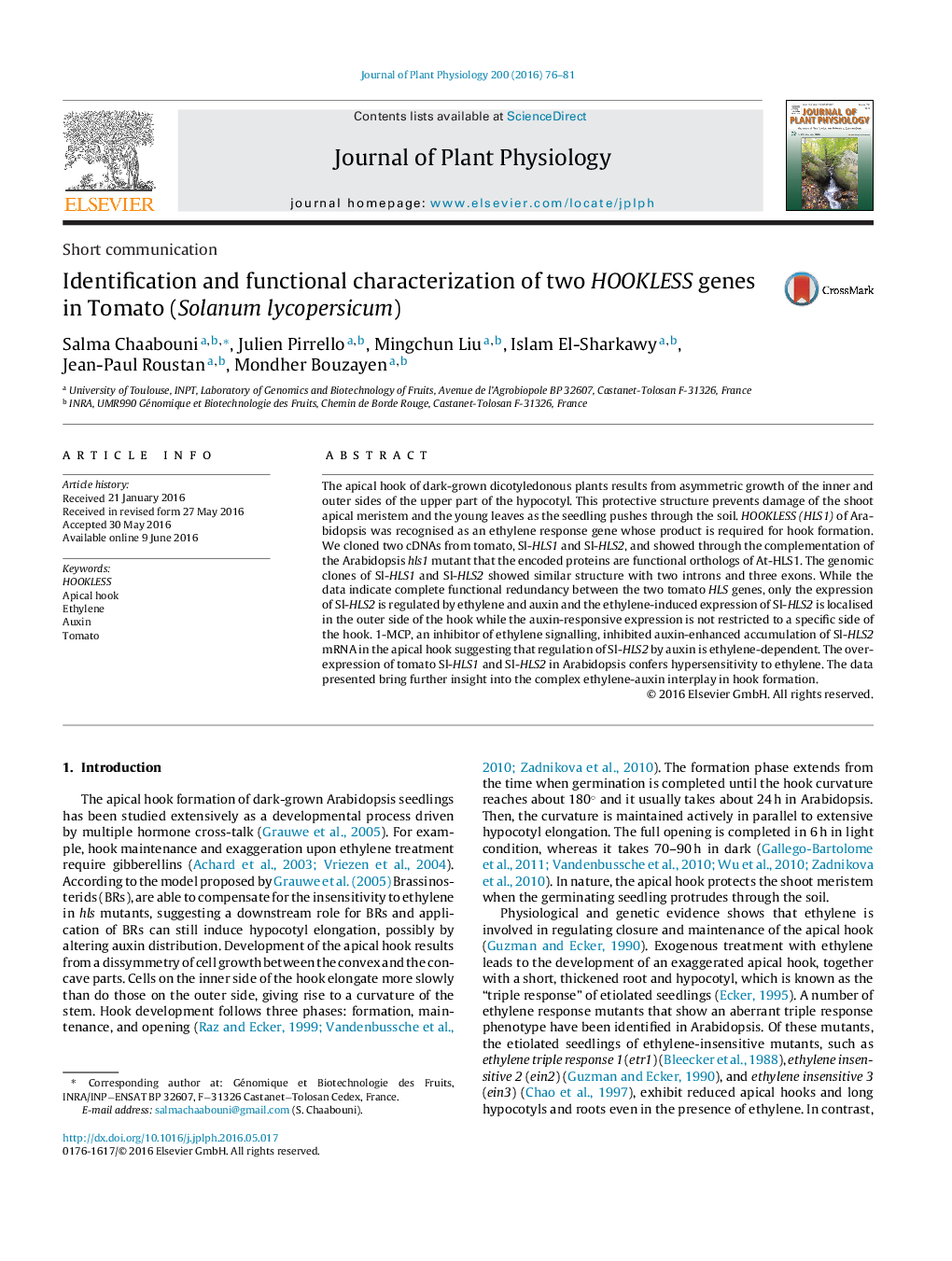| Article ID | Journal | Published Year | Pages | File Type |
|---|---|---|---|---|
| 2055378 | Journal of Plant Physiology | 2016 | 6 Pages |
The apical hook of dark-grown dicotyledonous plants results from asymmetric growth of the inner and outer sides of the upper part of the hypocotyl. This protective structure prevents damage of the shoot apical meristem and the young leaves as the seedling pushes through the soil. HOOKLESS (HLS1) of Arabidopsis was recognised as an ethylene response gene whose product is required for hook formation. We cloned two cDNAs from tomato, Sl-HLS1 and Sl-HLS2, and showed through the complementation of the Arabidopsis hls1 mutant that the encoded proteins are functional orthologs of At-HLS1. The genomic clones of Sl-HLS1 and Sl-HLS2 showed similar structure with two introns and three exons. While the data indicate complete functional redundancy between the two tomato HLS genes, only the expression of Sl-HLS2 is regulated by ethylene and auxin and the ethylene-induced expression of Sl-HLS2 is localised in the outer side of the hook while the auxin-responsive expression is not restricted to a specific side of the hook. 1-MCP, an inhibitor of ethylene signalling, inhibited auxin-enhanced accumulation of Sl-HLS2 mRNA in the apical hook suggesting that regulation of Sl-HLS2 by auxin is ethylene-dependent. The overexpression of tomato Sl-HLS1 and Sl-HLS2 in Arabidopsis confers hypersensitivity to ethylene. The data presented bring further insight into the complex ethylene-auxin interplay in hook formation.
